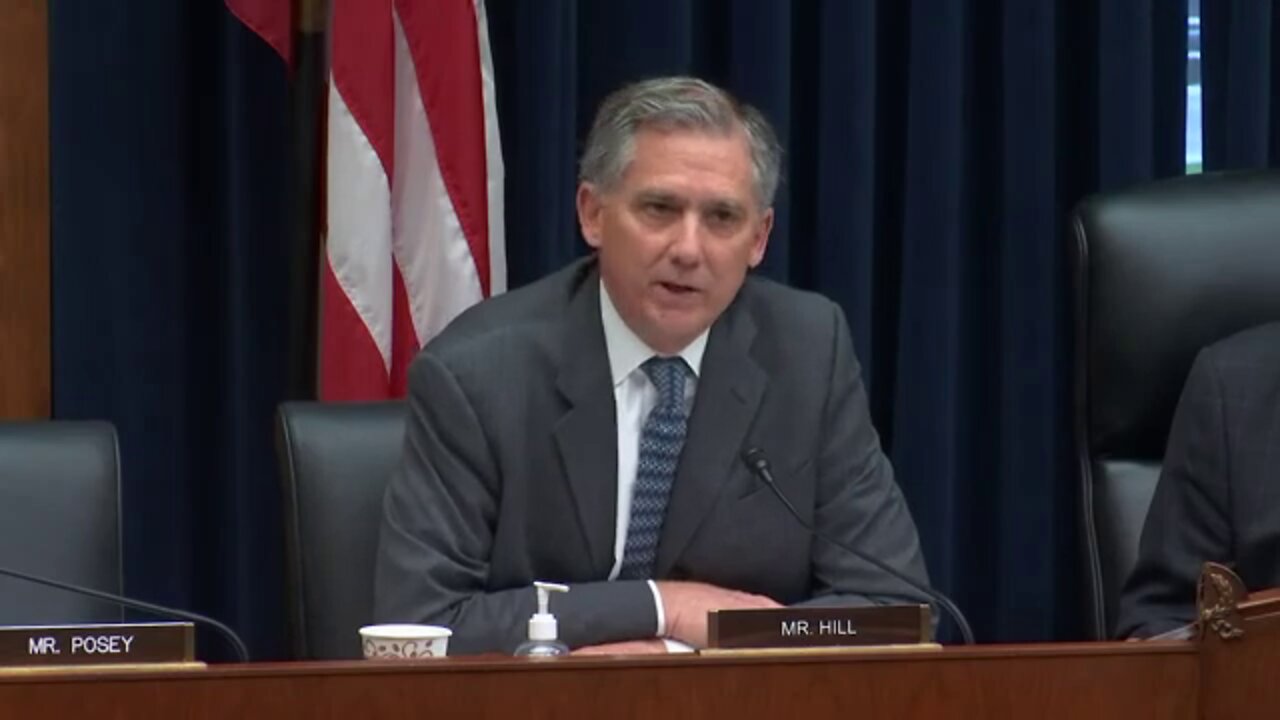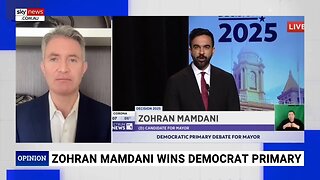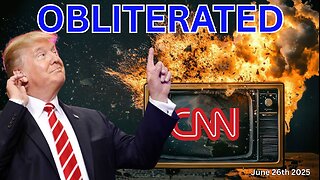Premium Only Content

U.S. House Committee on Financial Services: State of Emergency: Examining the Impact of Growing Wildfire Risk on the...
On Thursday, September 22, 2022, at 9:00 a.m. (ET) Housing, Community Development and Insurance Subcommittee Chairman Cleaver and Ranking Member Hill will host a hybrid hearing entitled, “State of Emergency: Examining the Impact of Growing Wildfire Risk on the Insurance Market."
- - - - - - - -
Witnesses for this one-panel hearing will be:
• Matthew Auer, Dean of the School of Public and International Affairs, University of Georgia
• Amy Bach, Executive Director, United Policyholders
• Ricardo Lara, California Insurance Commissioner
• Roy Wright, President & CEO of the Insurance Institute for Business & Home Safety
• Rex Frazier, President, Personal Insurance Federation of California
Background
In the U.S., wildfires have grown in reach and severity in recent years as a result of several factors including: climate change, which has created warmer and drier conditions that help fuel longer and more severe wildfire seasons; reduced land management practices; and the increasing number of people living in the area of transition between wilderness and human development, known as the wildland-urban interface (WUI).1 Since federal wildland fire agencies began reporting official wildfire data using current reporting processes in 1983, the number of acres burned by wildfires has increased substantially. By 2021, the five-year average of acres burned by wildfires has roughly doubled from what it was in the early 1990s (see figure 1). According to nationwide data compiled by the National Interagency Coordination Center (NICC), in 2021 alone, 58,985 wildfires burned 7,125,643 acres. 2021 was a particularly active year in Northern California, the Northern Rockies, and in the Northwest and Eastern areas of the country, where wildfire activity exploded across the western U.S., as the country grappled with record-breaking heat and historic drought conditions. According to a 2021 analysis, of the insured wildfire losses paid by the insurance industry since 1950, 70% have occurred since 2015. In 2017 and 2018 combined, home insurers’ underwriting losses in California reached an estimated $20 billion, more than double their profits from that line of business since the late 1990s.
Wildfires have devastating impacts on communities and households, leading to loss of life and billions of dollars in damages. More than 46 million homes—with an estimated value of $1.3 trillion—are now at risk from the impacts of wildfire. California, Florida, Texas, Colorado, and New Mexico, among others, are included in the highest risk states for the number of single-family residences with wildfire risk. Wildfires have the most destructive impact in the WUI. From 1990 to 2010, the size of the WUI grew by over 33% to 190 million acres, and the number of homes on these lands expanded by more than 41%. Most of the large fires with significant property damage have occurred in California, where some of the fastest developing counties are in the WUI. Between January 2005 and June 2022, wildfires destroyed more than 97,000 structures in the United States, including homes and businesses.13 The U.S. has had 20 wildfire events that each caused more than $1 billion in damage between 1980 and 2021 with 16 of those occurring after the year 2000. The California wildfires that occurred in 2018 alone caused an estimated $27.8 billion in damages and resulted in the deaths of 106 people.
Property insurance is an important financial resource for recovering from wildfire damage and can encourage wildfire-related risk mitigation. Primarily regulated by states, insurance policies, such as homeowner, renter, and commercial policies covering wildfire risk can provide financial protection to homeowners, renters, and commercial business, reducing economic hardship after a catastrophic event. Insurance coverage can also expedite the rebuilding and recovery process by providing liquidity to policyholders soon after a wildfire. By offering insurance incentives to policyholders for mitigation actions, either at the individual or community level, insurance can also help promote wildfire risk reduction efforts.
In response to growing risk exposure and a significant spike in losses in recent years, some insurers have begun to increase rates or exit regions where a large volume of wildfire claims have occurred in recent years. The Federal Insurance Office (FIO) within the Department of Treasury has observed that U.S. insurance consumers are increasingly unable to find affordable and available property insurance coverage in certain insurance markets affected by wildfires. In the past, when other catastrophic disasters....
-
 16:11
16:11
R.C. Davis
3 hours ago‘Will New York cope?’: Zohran Mamdani labelled ‘sub-AOC’ for radical socialist values
44 -

The Big Mig™
3 hours agoBazzel Baz, ‘BLACKLIST’, CIA Operative, Warrior, Rescuer, Author
5.31K11 -
 LIVE
LIVE
LFA TV
5 hours agoLFA TV ALL DAY STREAM - THURSDAY 6/26/25
2,513 watching -
 1:09:26
1:09:26
Dear America
4 hours agoFAKE NEWS GOING TO JAIL!! They Are LYING About Iran And We Can Prove It!
175K145 -
 2:01:06
2:01:06
Badlands Media
9 hours agoBadlands Daily: June 26, 2025
28.1K7 -
 2:59:44
2:59:44
Wendy Bell Radio
7 hours agoOBLITERATED
75.1K35 -
 45:17
45:17
Randi Hipper
2 hours agoUSE BITCOIN FOR YOUR MORTGAGE! MAJOR NEWS
11.9K1 -
 LIVE
LIVE
FusedAegisTV
19 hours agoPersona 5X Worldwide Release! FIRST LOOK | New Gacha
84 watching -
 LIVE
LIVE
LumpyPotatoX2
2 hours agoHunting the Showdown - #RumbleGaming
32 watching -
 22:05
22:05
The Rad Factory
4 hours ago $0.45 earnedMy F1 Caught Fire at the Race Track
13.8K1